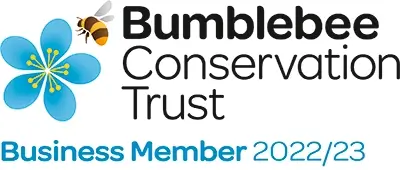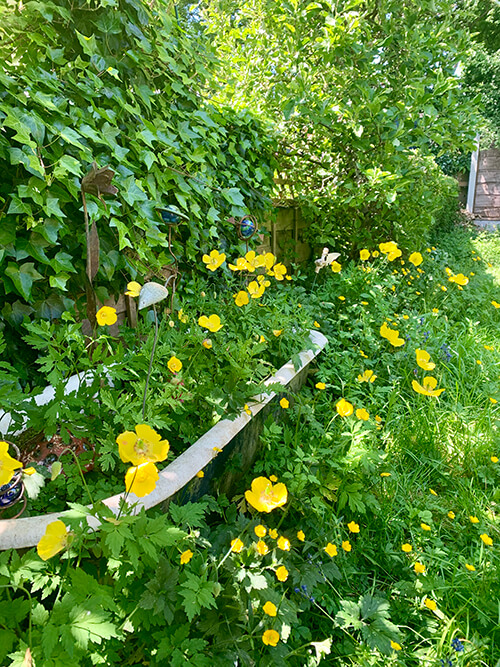Helen and I are very pleased to announce that we have decided to donate 10% of our annual profits to the Bumblebee Conservation Trust. We made the decision a few months ago, but now have everything set up and in place. We want to take this opportunity to explain our thought processes in doing this.


Why support the humble bumblebee?
We feel very fortunate
B Double E was founded in 2018. As most new businesses do we struggled to find a place in the market and make any money for a couple of years, but – I think because our portfolio of services is unique – we’re now in a position where we are making a profit. Not a huge one by any means, but a profit none the less.
And this has made us ask the question, ‘What do we do with our money?’.
I hope I’m right in saying that neither of us are selfish people. We’ve always supported charities where we can – either financially or we’ve volunteered in some way – and so this became our conversation. Do we simply take more dividend payments for ourselves, or look into the company supporting a charity on top of our individual charitable donations.
Tax
Paying tax is a privilege. It’s a privilege to be running a business that generates a profit, and a privilege to be able to support schools, the NHS, social care for those less fortunate etc. Unfortunately, this present UK government seems to want to give our tax money to party donors in exchange for unusable PPE. So as much as I’m happy to be in the position we’re in, I’d rather my money go to something useful, rather than just further lining the coffers of billionaires. So using our money for a charitable cause we both believe in for me adds some consolation to the knowledge that our tax money isn’t currently going where it’s needed. Hopefully, that will change soon, but our commitment to the bumblebees is made.
Why the bumblebees?
There’s the obvious connection with our name for starters.
Conservation is something we both care about.
We’re long-standing members of the RSPB, and I did some voluntary work with the RSPB for about 6 or 7 years. But the thing is, once you get your eye in for looking out for birds, you start to see other stuff too, and insects are a very important part of the ecosystem. We’ve tried to make or garden wildlife friendly (I’d say we support No Mow May, but it’s just that neither of like mowing the lawn, so it generally only gets done once or twice a year anyway), and as we sit out in the summer with a beer we see and hear the bees buzzing around. And once you get your eye in, you notice how many different species of bumblebees visit our tiny patch of land.

It’s fairly well documented that bees are under threat. Climate change, new pests and diseases and decline of habitat due to urbanisation and intensive farming practices are all factors in their crashing numbers. There’s also a quote – often mis-attributed to Einstein – that if bees go extinct we’ll follow 6 years later. Why? Because of the proportion of our food crops that are insect pollinated – bees doing the lions-share of the work. So apart from how nice it is to sit and watch these stripey fellows bumbling along from flower to flower, ensuring the bee population stays healthy, and in healthy numbers does seem important. Not-Einstein may be wrong, but it seems to be a statistic you don’t really want to put to the test.
The Bumblebee Conservation Trust
The Bumblebee Conservation Trust is the only charity in the UK dedicated solely to the conservation of bumblebees. It was founded in 2006, and works in partnership with Rethink Nature to make cooperative decisions in the conservation of nature as a whole. They also monitor bee numbers with regular Bee Walks and offer help to make your garden more bumblebee friendly. They have a number of science-based conservation projects on the go around the UK which you can read about on their website (There are several links to their site peppered throughout this blog – see if you can spot them!) and their mission is ‘To increase the number and distribution of bumblebees’. I joined as an individual member a few years ago, but refused to do a joint membership with Helen as the membership price is so ridiculously cheap and the joint membership barely more than that I decided it would be better for them if she also joined as an individual. There are also youth and family memberships on offer, as well as the chance to make one-off contributions.
So what’s next?
For us, it’s to continue to donate, and keep our garden messy (YESSSS!).
For you? Who knows?
Maybe you’d consider becoming a member of the Bumblebee Conservation Trust yourself (oh, go on then. Here’s the link again).
I could be really cheeky and say that the more work you give us, the more we donate to the Trust, so you can help the bees by hiring us. But that would be cheeky.
You could see us at a conference or social event and take some packets of the bee-friendly wildflower seeds we’re giving away from us.
Or you could just sit in a garden or park and look for little busy ladies in stripey jumpers and appreciate the sound of summer.

Bee and foxglove photo by George Hiles on Unsplash

